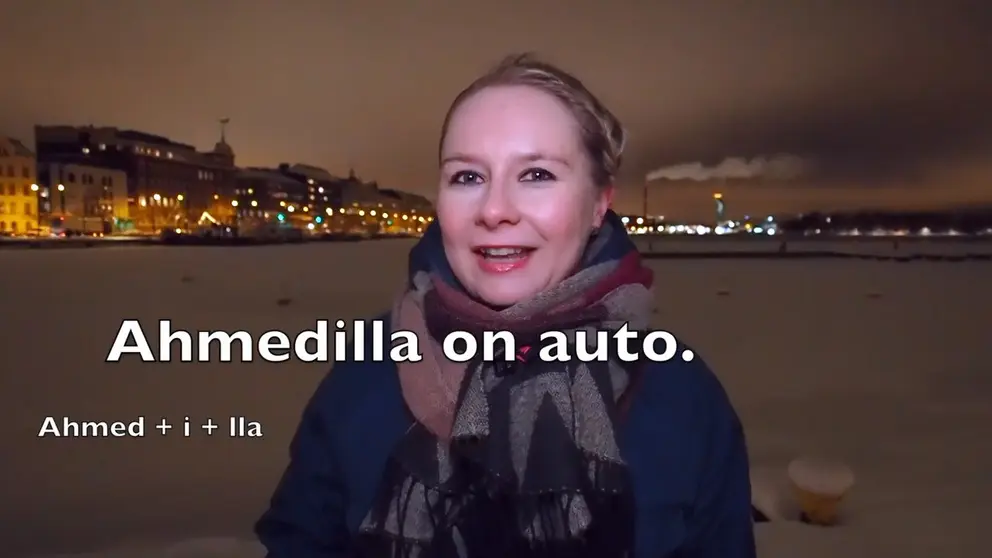Minulla on / I have
In this lesson you will learn the personal pronouns in Finnish. You will also learn how to use possessive structure in Finnish. You will need it when you want to tell what you have or what you do not have. In addition, you will learn to express your feelings in Finnish.
First, let’s learn the personal pronouns:
Minä = I
Sinä = You
Hän = He/she
Me = We
Te = You (plural)
He = They
Notice that there is only one pronoun for he and she: hän.
The possessive structure
In the possessive structure the pronoun has the ending lla or llä . The verb is always in the same form: on .
Minulla on - I have
Sinulla on - You have
Hänellä on - He/she has
Meillä on - We have
Teillä on - You have
Heillä on - They have
With the possessive structure you can tell the actual things you have: Minulla on koira . - I have a dog. Sinulla on auto - You have a car. Hänellä on laukku - She has a bag.
The possessive structure is often used when talking about feelings. In fact, there are feelings that work with minä olen structure and some feelings that work with minulla on.
Feelings with minä olen:
Minä olen iloinen - I am happy.
Minä olen surullinen - I am sad.
Minä olen väsynyt - I am tired.
Minä olen pahoillani - I am sorry.
Minä olen rakastunut - I am in love.
If you want to say these phrases in the negative form, you have to use the negative verb ei in the first person:
Minä en ole iloinen - I am not happy
Minä en ole surullinen - I am not sad
We will learn more about the verb conjugation in future lessons.
Feelings with minulla on:
Minulla on nälkä - I am hungry.
Minulla on jano - I am thirsty.
Minulla on kylmä - I am cold.
Minulla on kuuma - I am hot.
Minulla on pää kipeä - I have a headache.
The negative form of the possessive structure is: minulla ei ole , sinulla ei ole, hänellä ei ole, meillä ei ole, teillä ei ole, heillä ei ole.
Minulla ei ole nälkä - I am not hungry.
If you use the possessive structure with a name, you just add the ending lla after the name. For example: Annalla on pää kipeä - Anna has a headache. If there is letter ä, ö or y in the name, the ending is llä: Väinöllä on nälkä - Väinö is hungry.
If the name ends with a consonant, you will need an extra letter i before the ending: Ahmedilla on jano - Ahmed is thirsty.
You can learn some more expressions where you need the possessive structure in the following video. The video is in Finnish but there are English subtitles available.











